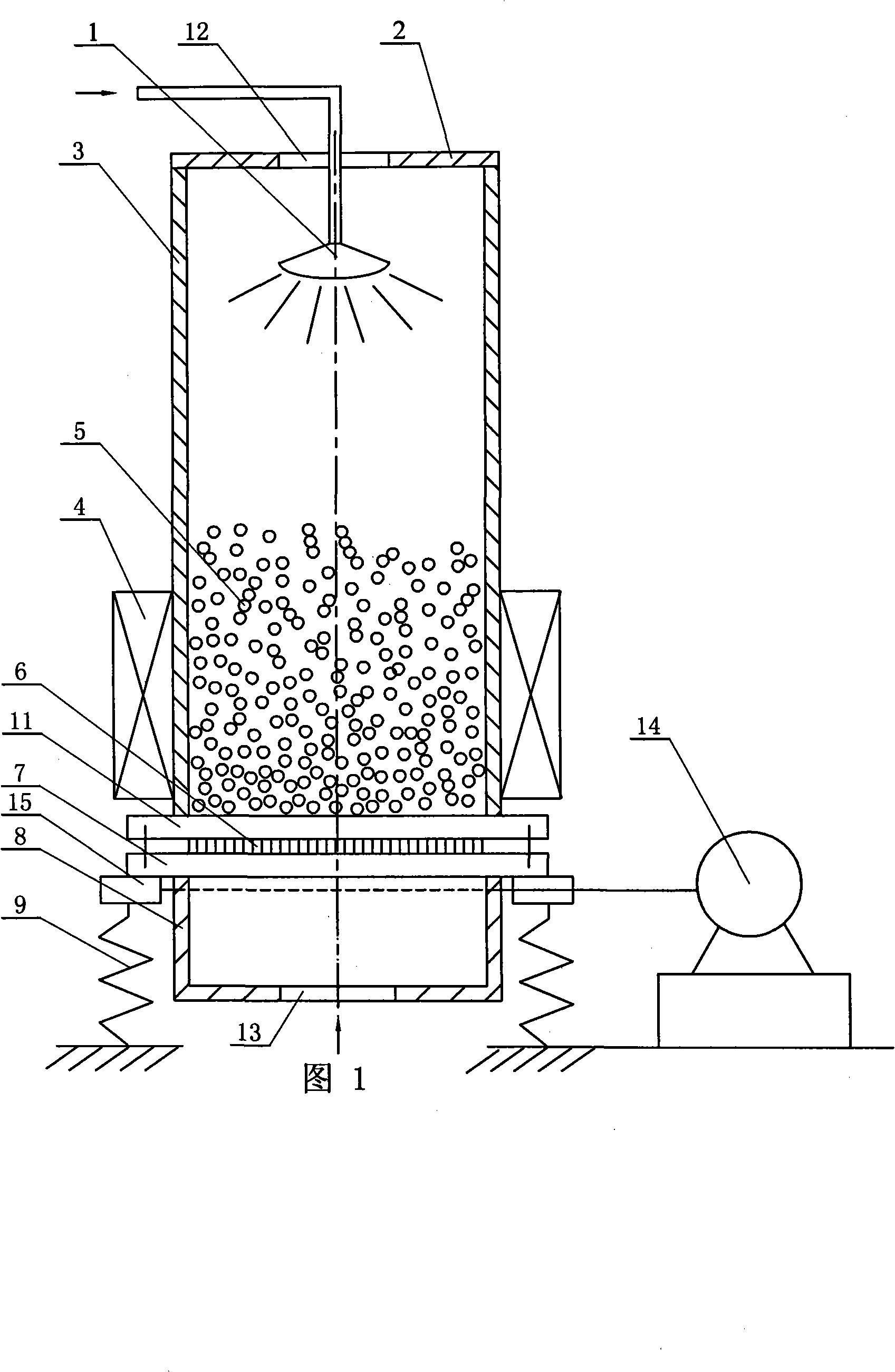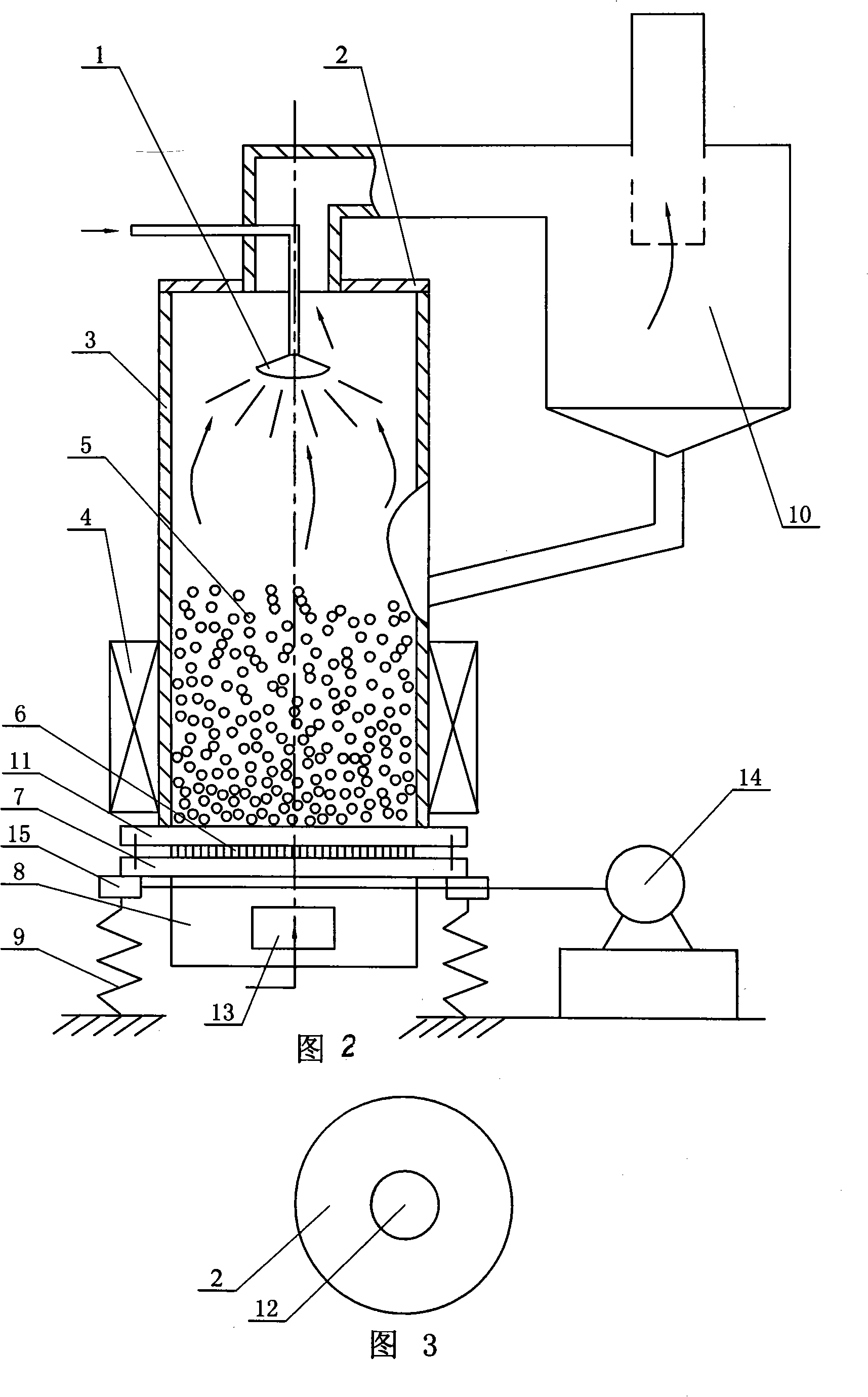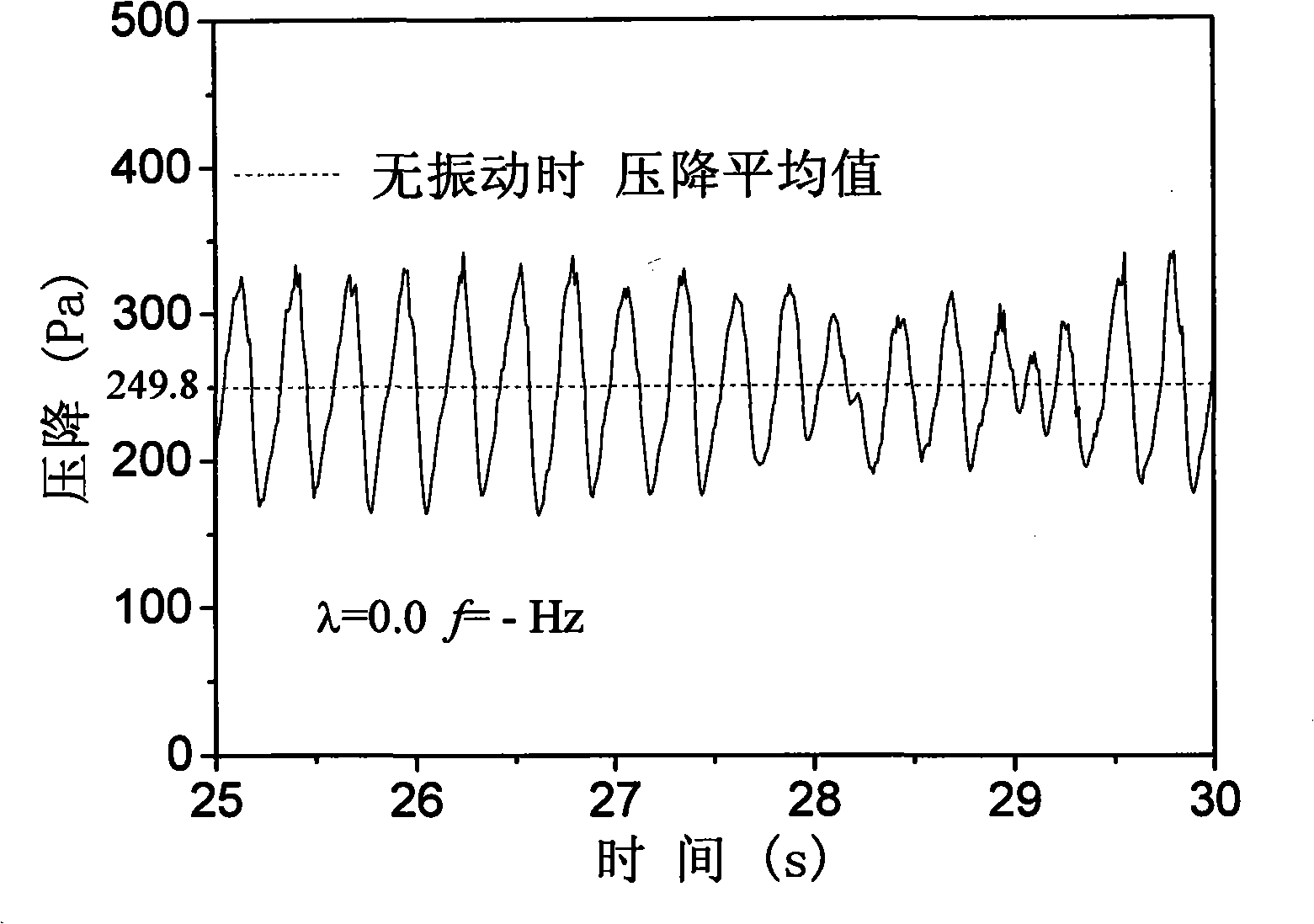Vibrating magnetic coupling fluid bed flue gas desulfurization reactor
A fluidized bed and reactor technology, applied in the field of fluidized bed flue gas desulfurization reactor, can solve the problems of slow desulfurization reaction speed, easy fouling of reactor, low efficiency, etc., and achieve fast desulfurization reaction speed and increase flow rate The effect of high operating range and high reaction efficiency
- Summary
- Abstract
- Description
- Claims
- Application Information
AI Technical Summary
Problems solved by technology
Method used
Image
Examples
specific Embodiment approach 1
[0008] Specific Embodiment 1: This embodiment is described with reference to FIGS. 1 to 3. The flue gas desulfurization reactor of this embodiment includes a fluidized bed, an atomizing nozzle 1, a magnetic coil 4, and a bellows 8; the fluidized bed consists of The cylinder body 3, the annular upper cover 2, the air distribution plate 6, the upper fixed frame plate 11, the lower fixed frame plate 7, and the magnetic bed material 5; The central hole of the cover 2 is the flue gas outlet 12. The upper fixed frame plate 11 and the lower fixed frame plate 7 are stacked together and fixed between the lower end surface of the cylinder body 3 and the upper end surface of the bellows 8. The cylinder body 3 A magnetic bed material 5 is installed inside, the air distribution plate 6 is fixed between the upper fixed frame plate 11 and the lower fixed frame plate 7, a flue gas inlet 13 is provided under the bellows 8, and the atomizing nozzle 1 passes through the annular upper cover The c...
specific Embodiment approach 2
[0009] Specific Embodiment 2: This embodiment is described in conjunction with Fig. 1 to Fig. 3. The cylinder body 3, the annular upper cover 2, the air distribution plate 6, the upper fixed frame plate 11, and the lower fixed frame plate 7 of this embodiment are all made of non-magnetic materials. Made, conducive to the smooth reaction of desulfurization. Other components and connections are the same as those in the first embodiment.
specific Embodiment approach 3
[0010] Specific Embodiment 3: This embodiment is described with reference to FIG. 1 and FIG. 2 . The flue gas inlet 13 of this embodiment is arranged on the bottom plate of the wind box 8 or on the side wall of the wind box 8 , as required. Other components and connections are the same as those in the first embodiment.
[0011] The working principle is: sulfur-containing flue gas enters the reactor filled with magnetic powder through the air distribution plate 6, and the desulfurizer enters the reactor from above the fluidized bed through the atomizing nozzle. The desulfurizing agent droplets react chemically with SOx in the rising flue gas, and the unreacted desulfurizing agent falls and covers the magnetic particles, forming a desulfurizing agent reaction layer to continue to react with SOx. When the gas velocity or amplitude is large, the magnetic particles and desulfurizer are carried out of the reactor by the flue gas, enter the separation device 10 with the flue gas (see...
PUM
 Login to View More
Login to View More Abstract
Description
Claims
Application Information
 Login to View More
Login to View More - R&D
- Intellectual Property
- Life Sciences
- Materials
- Tech Scout
- Unparalleled Data Quality
- Higher Quality Content
- 60% Fewer Hallucinations
Browse by: Latest US Patents, China's latest patents, Technical Efficacy Thesaurus, Application Domain, Technology Topic, Popular Technical Reports.
© 2025 PatSnap. All rights reserved.Legal|Privacy policy|Modern Slavery Act Transparency Statement|Sitemap|About US| Contact US: help@patsnap.com



